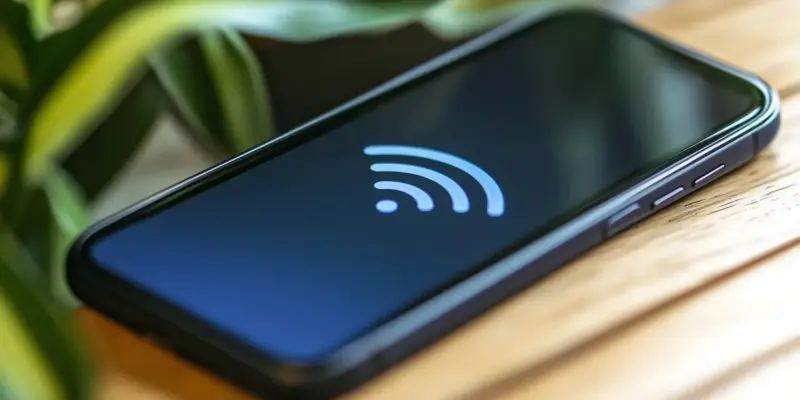In today’s technologically advanced world, our smartphones are constantly connected to the internet, often through Wi-Fi networks. However, this convenience can come at a risk if Wi-Fi settings on our iPhones are not properly configured, potentially exposing us to security threats and data breaches. Alarming media reports again this week warn that your iPhone’s default settings expose you and your data to hackers. Whether or not this threat affects you, it’s an easy setting to change and you should do that now. This is nothing new. NSA and law enforcement agencies have been issuing similar warnings for years, yet many users remain unaware of the dangers lurking within their device’s Wi-Fi settings. “The risk is not merely theoretical,” the NSA says. “Malicious techniques are publicly known and in use.” Let’s delve into the specific threats and what you can do to protect your data.
Public Wi-Fi Threats
When it comes to connecting to public Wi-Fi networks, there are inherent risks that users must be aware of. While reputable public networks, such as those found in hotels or airport lounges, generally pose little threat if internet traffic is encrypted, it’s crucial to understand that not all public networks are created equally. The real danger lies in rogue Wi-Fi networks set up to deceive users into thinking they are secure. By mimicking the names of well-known public Wi-Fi networks in hotels or cafes, these “evil twin” networks can trick users into connecting, thereby facilitating malicious activities. The NSA has warned that cyber actors can use these networks to redirect users to malicious websites, inject malicious proxies, and eavesdrop on network traffic.
Moreover, the risk of falling victim to such attacks increases significantly when traffic is not encrypted. Hackers positioned between your device and the network access point can view unencrypted data and even inject harmful data into your device or display phishing websites to steal your credentials. Although it may seem like a targeted attack, it’s a common threat that could affect anyone who connects to an unsecured or rogue public Wi-Fi network. For added security, it’s advisable to use a reputable VPN service, even though some agencies caution against using personal VPNs due to the possibility of data capture if the service is not trustworthy.
NSA’s Recommendations
The NSA has been sounding alarms about this issue for years, with recommendations aimed at minimizing risk when connecting to public Wi-Fi. The agency strongly advises against connecting to open Wi-Fi hotspots and suggests disabling the Wi-Fi network auto-connect feature on your iPhone. Within the “Settings” > “Wi-Fi” menu, set the “Ask to Join Networks” option to “Off” or “Ask,” avoiding the “Notify” setting. Similarly, the “Auto-Join Hotspot” setting should be configured to “Ask to Join” or “Never,” rather than the default “Automatic” option. This would prompt your device to ask for confirmation before connecting to any new networks, giving you more control and reducing the risk of inadvertently connecting to a malicious network.
Ensuring your web browsing is encrypted is another crucial step in securing your data. Always check for the padlock symbol in the browser’s URL, indicating that the website uses HTTPS and your data is encrypted. Additionally, avoid entering credentials or other sensitive information into pop-up windows or websites that appear unexpectedly. Following these NSA recommendations could significantly reduce your exposure to potential Wi-Fi threats and help keep your data secure.
Additional Security Measures
Beyond the basic recommendations, there are other measures iPhone users can take to further enhance their security when using Wi-Fi networks. One such measure involves manually managing the known networks on your device. In the Wi-Fi settings menu, click the “Edit” button at the top right corner and navigate to the “Managed Networks” section. Here, you can click the “i” next to each network in the list and deselect the “Auto-Join” option, unless you are certain that the network is secure and you want your device to reconnect automatically. This approach offers an additional layer of control over which networks your device connects to in the background.
It is also important to periodically review the list of known Wi-Fi networks stored on your device, which you can find above the “Managed Networks” section. For networks that you no longer use or trust, consider removing them from the list or disabling the auto-join feature. This helps prevent your device from automatically reconnecting to potentially compromised networks in the future. Meanwhile, keep those threats in mind. Ensure your web browsing is encrypted and don’t enter credentials into unexpected popups or familiar websites that appear suspiciously.
Conclusion and Action Steps
Connecting to public Wi-Fi networks carries inherent risks. While reputable networks in places like hotels and airport lounges pose minimal threats if traffic is encrypted, not all public networks are equally secure. A real threat comes from rogue Wi-Fi networks designed to deceive users. By impersonating the names of trusted networks in cafes or hotels, these “evil twin” networks trick users into connecting and enable malicious activities. The NSA has warned that cyber actors use these networks to redirect users to harmful websites, inject malicious proxies, and eavesdrop on network traffic.
The risk of attacks increases if your traffic isn’t encrypted. Hackers positioned between your device and the access point can see unencrypted data and inject harmful data or display phishing sites to steal your credentials. These attacks are common and can affect anyone using unsecured or rogue public Wi-Fi. For added safety, using a reliable VPN service is advisable, though some agencies caution against personal VPNs if the service provider is not trustworthy, as they too can capture your data.

